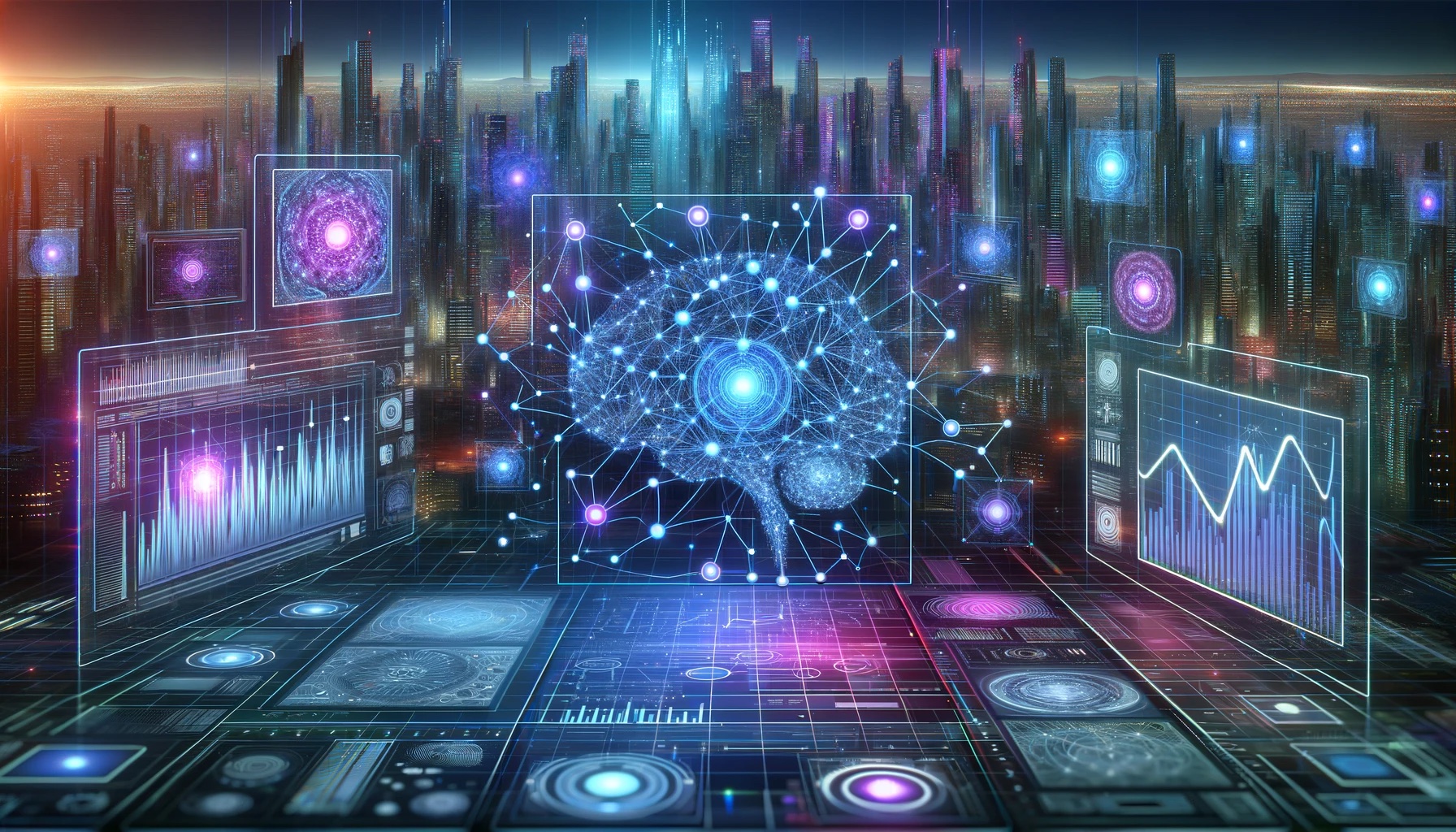
by Joche Ojeda | Dec 18, 2023 | A.I
ONNX: Revolutionizing Interoperability in Machine Learning
The field of machine learning (ML) and artificial intelligence (AI) has witnessed a groundbreaking innovation in the form of ONNX (Open Neural Network Exchange). This open-source model format is redefining the norms of model sharing and interoperability across various ML frameworks. In this article, we explore the ONNX models, the history of the ONNX format, and the role of the ONNX Runtime in the ONNX ecosystem.
What is an ONNX Model?
ONNX stands as a universal format for representing machine learning models, bridging the gap between different ML frameworks and enabling models to be exported and utilized across diverse platforms.
The Genesis and Evolution of ONNX Format
ONNX emerged from a collaboration between Microsoft and Facebook in 2017, with the aim of overcoming the fragmentation in the ML world. Its adoption by major frameworks like TensorFlow and PyTorch was a key milestone in its evolution.
ONNX Runtime: The Engine Behind ONNX Models
ONNX Runtime is a performance-focused engine for running ONNX models, optimized for a variety of platforms and hardware configurations, from cloud-based servers to edge devices.
Where Does ONNX Runtime Run?
ONNX Runtime is cross-platform, running on operating systems such as Windows, Linux, and macOS, and is adaptable to mobile platforms and IoT devices.
ONNX Today
ONNX stands as a vital tool for developers and researchers, supported by an active open-source community and embodying the collaborative spirit of the AI and ML community.
ONNX and its runtime have reshaped the ML landscape, promoting an environment of enhanced collaboration and accessibility. As we continue to explore new frontiers in AI, ONNX’s role in simplifying model deployment and ensuring compatibility across platforms will be instrumental in advancing the field.

by Joche Ojeda | Dec 17, 2023 | A.I
In the dynamic world of artificial intelligence (AI) and machine learning (ML), diverse models such as ML.NET, BERT, and GPT each play a pivotal role in shaping the landscape of technological advancements. This article embarks on an exploratory journey to compare and contrast these three distinct AI paradigms. Our goal is to provide clarity and insight into their unique functionalities, technological underpinnings, and practical applications, catering to AI practitioners, technology enthusiasts, and the curious alike.
1. Models Created Using ML.NET:
- Purpose and Use Case: Tailored for a wide array of ML tasks, ML.NET is versatile for .NET developers for customized model creation.
- Technology: Supports a range of algorithms, from conventional ML techniques to deep learning models.
- Customization and Flexibility: Offers extensive customization in data processing and algorithm selection.
- Scope: Suited for varied ML tasks within .NET-centric environments.
2. BERT (Bidirectional Encoder Representations from Transformers):
- Purpose and Use Case: Revolutionizes language understanding, impacting search and contextual language processing.
- Technology: Employs the Transformer architecture for holistic word context understanding.
- Pre-trained Model: Extensively pre-trained, fine-tuned for specialized NLP tasks.
- Scope: Used for tasks requiring deep language comprehension and context analysis.
3. GPT (Generative Pre-trained Transformer), such as ChatGPT:
- Purpose and Use Case: Known for advanced text generation, adept at producing coherent and context-aware text.
- Technology: Relies on the Transformer architecture for subsequent word prediction in text.
- Pre-trained Model: Trained on vast text datasets, adaptable for broad and specialized tasks.
- Scope: Ideal for text generation and conversational AI, simulating human-like interactions.
Conclusion:
Each of these AI models – ML.NET, BERT, and GPT – brings unique strengths to the table. ML.NET offers machine learning solutions in .NET frameworks, BERT transforms natural language processing with deep language context understanding, and GPT models lead in text generation, creating human-like text. The choice among these models depends on specific project requirements, be it advanced language processing, custom ML solutions, or seamless text generation. Understanding these models’ distinctions and applications is crucial for innovative solutions and advancements in AI and ML.

by Joche Ojeda | Dec 16, 2023 | A.I
Understanding Machine Learning Models
1. What Are Models?
Definition: A machine learning model is an algorithm that takes input data and produces output, making predictions or decisions based on that data. It learns patterns and relationships within the data during training.
Types of Models: Common types include linear regression, decision trees, neural networks, and support vector machines, each with its own learning method and prediction approach.
2. How Are They Different?
Based on Learning Style:
- Supervised Learning: Models trained on labeled data for tasks like classification and regression.
- Unsupervised Learning: Models that find structure in unlabeled data, used in clustering and association.
- Reinforcement Learning: Models that learn through trial and error, rewarded for successful outcomes.
Based on Task:
- Classification: Categorizing data into predefined classes.
- Regression: Predicting continuous values.
- Clustering: Grouping data based on similarities.
Complexity and Structure: Models range from simple and interpretable (like linear regression) to complex “black boxes” (like deep neural networks).
3. How Do I Use Them?
Selecting a Model: Choose based on your data, problem, and required prediction type. Consider data size and feature complexity.
Training the Model: Use a dataset to let the model learn. Training methods vary by model type.
Evaluating the Model: Assess performance using appropriate metrics. Adjust model parameters to improve results.
Deployment: Deploy the trained model in real-world environments for prediction or decision-making.
Practical Usage
- Tools and Libraries: Utilize libraries like scikit-learn, TensorFlow, and PyTorch for pre-built models and training functions.
- Data Preprocessing: Prepare your data through cleaning, normalization, and splitting.
- Experimentation and Iteration: Experiment with different models and configurations to find the best solution.

by Joche Ojeda | Dec 7, 2023 | A.I
Neural Networks: An Overview
Neural networks are a cornerstone of artificial intelligence (AI), simulating the way human brains analyze and process information. They consist of interconnected nodes, mirroring the structure of neurons in the brain, and are employed to recognize patterns and solve complex problems in various fields including speech recognition, image processing, and data analysis.
Introduction to Neural Networks
Neural networks are computational models inspired by the human brain’s interconnected neuron structure. They are part of a broader field called machine learning, where algorithms learn from and make predictions or decisions based on data. The basic building block of a neural network is the neuron, also known as a node or perceptron. These neurons are arranged in layers: an input layer to receive the data, hidden layers to process it, and an output layer to produce the final result. Each neuron in one layer is connected to neurons in the next layer, and these connections have associated weights that adjust as the network learns from data.
Brief History
The concept of neural networks dates back to the 1940s when Warren McCulloch and Walter Pitts created a computational model for neural networks. In 1958, Frank Rosenblatt invented the perceptron, an algorithm for pattern recognition based on a two-layer learning computer network. However, the interest in neural networks declined in the 1960s due to limitations in computing power and theoretical understanding.
The resurgence of interest in neural networks occurred in the 1980s, thanks to the backpropagation algorithm, which effectively trained multi-layer networks, and the increase in computational power. This resurgence continued into the 21st century with the advent of deep learning, where neural networks with many layers (deep neural networks) achieved remarkable success in various fields.
A Simple Example
Consider a simple neural network used for classifying emails as either ‘spam’ or ‘not spam.’ The input layer receives features of the emails, such as frequency of certain words, email length, and sender’s address. The hidden layers process these inputs by performing weighted calculations, passing the results from one layer to the next. The final output layer categorizes the email based on the processed information, using a function that decides whether it’s more likely to be ‘spam’ or ‘not spam.’
Conclusion
Neural networks, with their ability to learn from data and make complex decisions, have become integral to advancements in AI. As computational power and data availability continue to increase, neural networks are poised to drive significant innovations across various sectors.



